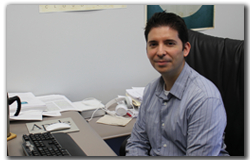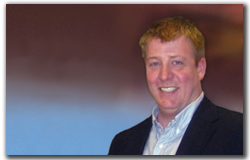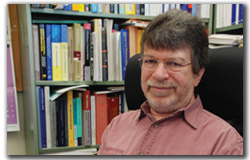Research Highlights:
 A Message from the Associate Dean for Research and Graduate Studies
A Message from the Associate Dean for Research and Graduate Studies
Chris Rodger
It is my pleasure to introduce the research activities that are described in the following pages where some activities within each department are highlighted. These stories can give you a feel for the ground-breaking work being done by the faculty and graduate students in COSAM. Hopefully, you have also been enjoying other research articles presented in e-Journey, COSAM’s electronic newsletter.
It has been a difficult year in terms of the extramural funding that has been awarded to COSAM faculty, being 20 percent below the five-year average. It is well documented that the traditional government sources for research dollars have suffered cut-backs, and more recently have been affected by sequestration. The agencies affected, such as the National Science Foundation, the National Institutes of Health, and the Department of Defense, are all critical to COSAM researchers. In such challenging times, it is helpful that our faculty have been also looking at non-traditional avenues to fund their research, some successfully allying with industry to fuel their work. Even with these limitations, you can see that the faculty continue to produce leading and innovative research.
 Orlando Acevedo
Orlando Acevedo
Acevedo conducts drug-discovery research
Orlando Acevedo, associate professor of organic chemistry, is a computational chemist with several research projects under way. He is involved in drug discovery research, collaborating with various Auburn professors and medical schools across the country. He is a collaborator on a project with Yale School of Medicine working to discover better drugs to treat melanoma. With the University of Pittsburgh School of Medicine, he is working to produce a cyclophilin-based therapeutic treatment effective at impeding the transmission of HIV. He has a patent with Rajesh Amin, assistant professor of pharmacal sciences at Auburn, for developing compounds used to treat diabetes. Acevedo is also involved in on-campus drug discovery research with Angela Calderon, assistant professor of pharmacal sciences, as they seek to develop anti-malarial compounds.
 Luke Marzen
Luke Marzen
Marzen researches wetlands using cutting-edge techniques
A multidisciplinary team of scientists from across the Auburn campus, including Luke Marzen, professor of geography, are researching the Alabama wetlands through a $363,800 grant from the National Institutes for Water Resources/U.S. Geological Survey National Competitive Grant Program. The three-year project is titled Inventory, Classification, and Assessment of Alabama’s Geographically Isolated Wetlands. Marzen is a co-primary investigator on the project and is working with others from Auburn including Sam Fowler, co-primary investigator and director of the Water Resources Center; Al Schotz, an ecologist and biologist with the Environmental Institute; and Michael Barbour, GIS database manager for the Alabama Heritage Program. The statewide project is based on a partnership agreement between the Environmental Protection Agency Region 4, the Alabama Department of Environmental Management, and Auburn University. The agreement designates Auburn as a Watershed Center of Excellence. Information collected by the team will support the Alabama Department of Environmental Management’s Wetland Management Program, which strives to strengthen the state’s ability to implement a comprehensive wetlands program by providing baseline data to fill information gaps. The project will inventory, classify, and assess isolated wetlands in Alabama to enhance protection of these biologically diverse ecosystems.
 Amnon "AJ" Meir
Amnon "AJ" Meir
Meir explores complex-coupled phenomena
Amnon “AJ” Meir, professor of mathematics, has a strong research interest in numerical and computational mathematics. Specifically, he conducts research in numerical partial differential equations, or the numerical analysis of methods for approximating solutions of partial differential equations, and the modeling and simulation of complex-coupled problems. He has several ongoing projects concerning problems that are considered complex- coupled phenomena. These involve mathematical models of physical systems, or physically motivated problems, which are governed by partial differential equations and involve multiple components, complex physics or multi-physics, as well as complex or coupled domains, or multiple scales.
For example, Meir is working on poromechanics research in collaboration with Lorraine Wolf and Ming-Kuo Lee, both professors in the Department of Geology and Geography. The research is partially funded by the National Science Foundation and the U.S. Geological Survey.
 Minseo Park
Minseo Park
Park's research focuses on applied physics
For the last nine years since he joined the Department of Physics, Professor Minseo Park’s research has been focused on applied physics of wide band gap semiconductor (GaN and ZnO) materials and devices. He is interested in power electronic, optoelectronic, and bioelectronic applications of wide band gap semiconductors.
“It is very important to generate energy efficiently. However, it is also very important to use the energy efficiently,” said Park.
Energy efficient power electronic semiconductor devices are required in power electronic systems such as power converters in hybrid/electric vehicles (HEVs). Therefore, it is of necessity to use the devices that will reduce the energy loss in power conversion. Silicon (Si) has been widely used as a material for power electronic devices. However, it is difficult to reduce those losses in Si-based devices. By using wide band gap semiconductors such as gallium nitride (GaN), energy-efficient power electronic devices can be produced.
